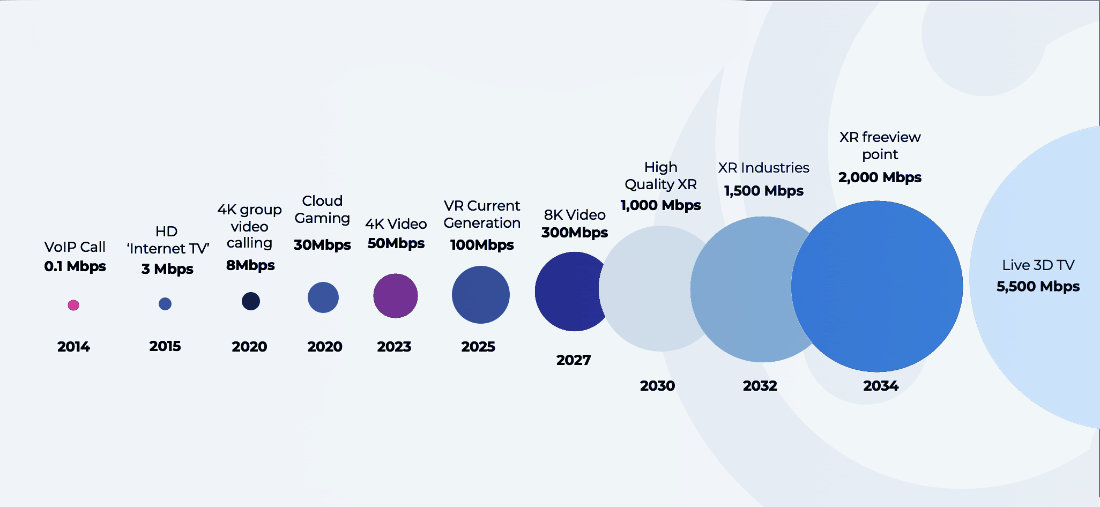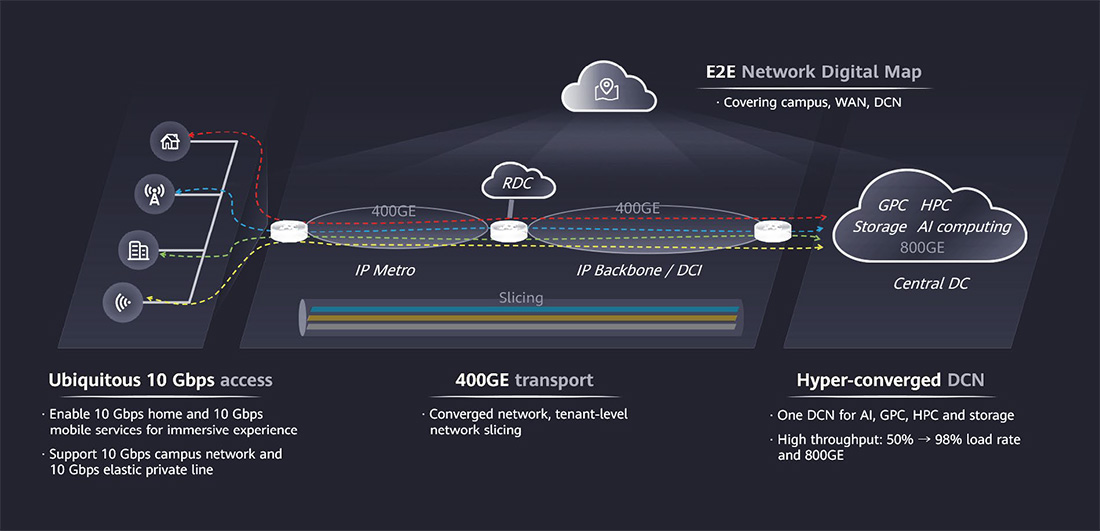
03 Perspectives
Bringing the Benefits of Broadband to All

Martin Creaner
Director General of the World Broadband Association (WBBA)
Although difficult to fully quantify, there is now broad understanding of, and consensus on, the importance of broadband to a country’s wealth and social development, and the benefits that broadband brings to a country are undeniable. Mobile broadband – through personal smartphones and tablets – can bring swift economic benefits to emerging markets. However, modelling by the ITU shows that it is the continued investment in fixed broadband that drives sustained long-term socioeconomic growth.
The benefits of broadband also spread far beyond those that can be directly monetized. Broadband networks are now used to support a vast range of industries, from manufacturing to health institutions to educational facilities, as well as supporting environmental sustainability objectives and social aspects such as well-being and social equality. The benefits that broadband brings in these areas are equally, if not more, important than those that can be directly monetized.
However, the levels of progress in fixed broadband technology between countries still varies wildly, from markets with 100% full-fiber connectivity, to countries that have less than 1% fixed broadband penetration of any type, compromising the nation’s ability to access the benefits of high-quality fixed broadband. Advanced full-fiber broadband networks, which are proven to provide the best level of quality across all metrics, are the pinnacle of this investment. The next generation of the Internet will be highly reliant on such advanced broadband network capabilities and those countries that are lagging behind in rollout, and unable to satisfy or leverage global demand trends, will find themselves at a disadvantage in comparison with the most advanced countries, locking them out of the digital economy of the future.
The next generation of the internet will be highly reliant on such advanced broadband network capabilities and those countries that are lagging behind in rollout, and unable to satisfy or leverage global demand trends, will find themselves at a disadvantage in comparison with the most advanced countries, locking them out of the digital economy of the future.
Those demands can be measured in terms of both accelerated connectivity and growth in consumption. 243 million fixed connections will be added between 2022-27, meaning that by 2027, 32% of the global population will have a fixed broadband connection. Crucially however, most of the fixed broadband population will continue to reside in the developed markets of Asia & Oceania, North America, and Western Europe, meaning that fixed broadband risks remaining the privilege of developed markets.
While we will see an acceleration of demand over the period to 2027 and beyond, there will be no single killer use case or application, rather those future expectations and demands on the network will be driven by a combination of factors. Future digital consumer applications will rely on high-bandwidth, highly consistent and low-latency networks, as well as a need for speed (see Figure 1 below).

As businesses rapidly digitize, with unprecedented adoption of video-based collaboration tools and the evaluation and adoption of hybrid/multi-cloud services, the demand for broadband connectivity within the enterprise sector has increased significantly and is only expected to continue rising.
Figure 2 below demonstrates the industry use cases which we expect to drive that demand, over the next 3 and 5 years, with 2B revenues from mature markets presenting a significant opportunity as whole industries move towards the more fundamental digital transformation provided by better connectivity, where support is required across a whole range of value-added services.

Through a better understanding of the scale, nature and timing of the future demand for services and applications, and to enable all countries to access the benefits of advanced broadband, the World Broadband Association (WBBA) has developed its view on how networks should evolve over the next 10 years, developing a Next-Generation Broadband Technology Roadmap based on the 6 key dimensions of ultra-enhanced speeds, greater intelligence, ultra-reliable & consistent, trustworthy & green, enhanced connectivity and greater sensing capabilities.
The digital economy of 2030 will require networks that compared to today will deliver on average:
• 10 x connection speed: 1G to 10G
• 10 x compute capacity: 90K to 850K edge servers
• 10 x reduction in latency: 10ms to 1-3ms
While the evolution to this next generation of broadband networks is complex, the WBBA is providing a long-term vision and actionable framework for all industry stakeholders, to drive the development of broadband networks that deliver on the requirements above and ultimately provide:
• Ultra-high-speed, high-quality connectivity for all
• A converged network to deliver all services, create synergies, and accelerate monetization
• An agile network that enables the creation of efficient new use cases and business models
• Full automation to maximize network and service operations optimization
• Minimal impact on the environment
Distinct from, yet complementary to, the work already being done by standards and policy bodies, the WBBA is providing the fixed broadband world with a collective voice, shaping opinion, enabling a vibrant business ecosystem and supporting sustainable industry development on the most critical topics.
As well as its ongoing work into the Next-Generation Technology Roadmap, the WBBA is developing a Broadband Investment Guidebook, which is advocating a set of arguments for why it is important and beneficial to all stakeholders to invest in developing broadband in any given region. By looking at investment in broadband from several different perspectives, including the point of view of governments, the financial community and operators, the WBBA is able to offer actionable recommendations for these different groups to consider on broadband investment strategies.
Embracing sustainability as a core element of corporate strategy offers great potential for the telecom industry, enabling companies to mitigate risks, improve operational efficiencies, enhance their reputation, access capital and drive innovation. Through this work, the WBBA identifies and leads on the role of next generation broadband in a well-defined and operationalized sustainability strategy, including establishing the measures and methods required to help assess and improve network energy efficiency. This helps to support industry stakeholders in aligning with their customers preferences, complying with increased regulatory pressures, and gaining competitive advantage.
The WBBA is also focused on understanding the landscape of cloud network convergence. This group is assessing and advising on how to achieve "cloud and network as one", realising congestion-free new transport infrastructure with better network elastic scalability, enhanced intelligence, and true deterministic experience. By providing a way forward for cloud-based digital transformation, the WBBA is helping to facilitate the success of the digital economy.
Across all of its areas of interest and influence, the aim of WBBA is to help to bridge the digital divide, bringing together broadband industry stakeholders - within open and independent governance structures - to drive cooperation, education, and advocacy in the fixed broadband industry.
The WBBA has members in every continent, bringing together the ecosystem of broadband operators, vendors, regulators, investors and end-users, as it seeks to connect the world by bringing the benefit of broadband to all.


































